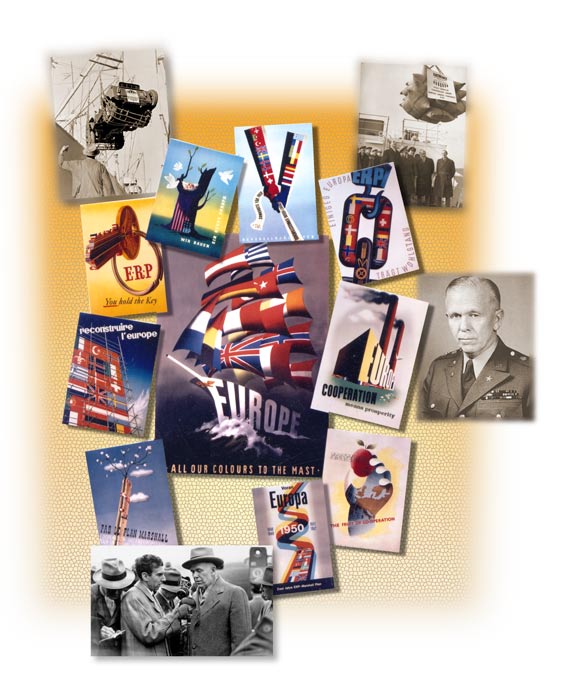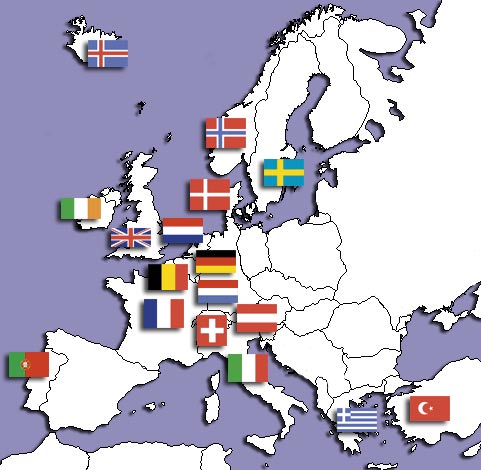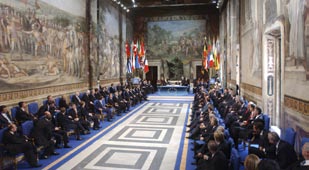In retrospect, the GI Bill may appear to some to have
Bill enabled the nation to overcome years of instability,
been a huge public “welfare” program. But it would be
restored the nation’s human, economic, and social
wrong to think of it that way. As initially administered,
capital, and helped catapult the United States to leader-
it was a special law for a very special time, made avail-
ship on the world’s stage.
able only to one generation of veterans and unrelated to
need. But it has had a lasting legacy through continued
Milton Greenberg is professor emeritus of government at American University application of its major themes for all veterans of wars
in Washington, D.C., where he also served as provost and interim president.
subsequent to World War II and still serves as an induce-
His academic career includes service on the faculties of the University of Tennes-ment to sustain a
see and Western Michigan
volunteer military
University, as dean of the
force. For non-vet-
College of Arts and Sciences
erans, and indeed
at Illinois State Univer-
for the nation,
sity, and as vice president
it established a
for academic affairs at
model framework
Roosevelt University. He
for achievement
is co-author (with Jack C.
through educa-
Plano) of a major reference
tion and property
work, The American
ownership. In
Political Dictionary , first
addition, it helped
published in 1962 and
create a climate
now in its 11th edition. In
where intellectual
1997, he authored The
ambition became
GI Bill: The Law That
a commonplace
Changed America .
A veteran of a more recent war meets with the Georgia Department of
Veterans Services. Help is still available for returning vets.
53


The “Marshall Plan” – named for General (right)
– later Secretary of State George C. Marshall (below)
– stabilized Europe and bolstered U.S. alliances after
World War II.
54



by David Ellwood
The Marshall Plan:
A Strategy That
Worked
IT DIDN’T START AS A PLAN, AND SOME OF THE VETERANS SAID
IT NEVER DID BECOME A PLAN. ITS OWN SECOND-IN-COMMAND,
HARLAN CLEVELAND, CALLED IT “A SERIES OF IMPROVISATIONS
... A CONTINUOUS INTERNATIONAL HAPPENING.” YET THE
EUROPEAN RECOVERY PROGRAM (ERP) – BETTER KNOWN AS
THE MARSHALL PLAN – HAS ENTERED INTO HISTORY AS
THE MOST SUCCESSFUL AMERICAN FOREIGN POLICY PROJECT
OF ALL SINCE WORLD WAR II. AFTER THE FALL OF
APARTHEID, SOUTH AFRICANS CALLED FOR A MARSHALL PLAN.
AFTER
THE
FALL
OF
THE
BERLIN
WALL,
EAST
EUROPEANS AND RUSSIANS DEMANDED THE MARSHALL PLAN
THEY HAD BEEN DENIED BY THE SOVIET UNION IN 1947.
FEARFUL OF DISINTEGRATION IN AFRICA, THE BRITISH
GOVERNMENT IN 2005 PROPOSED COORDINATED INTERNA-
TIONAL INTERVENTION ON THE LINES OF THE MARSHALL
PLAN. THE MYTH OF THE MARSHALL PLAN HAS BECOME AS
FORCEFUL AS ITS TRUE HISTORICAL LEGACY. IN 1955 THE
55


plan’s official historian noted how, from a one-paragraph
Kennan and his new State Department “Policy Plan-
“suggestion” by Secretary of State George Marshall at
ning Staff” produced one of the master-documents from
a Harvard graduation ceremony, had sprung a program
which the Marshall Plan eventually flowed. In part, their
which “evolved swiftly into a vast spirited international
thinking derived from Roosevelt-era understandings of
adventure: as the enterprise unfolded it became many
the causes of two world wars and the Great Depression:
things to many men.” Fifty years later, such was the
class hate, poverty, backwardness, and the lack of hope
fame of the project, that the same could still be said.
for change. It was a key intention of the people in Wash-
ington rebuilding the world after the war to support the
ordinary citizen’s demand for a share in the benefits of
The Inception of an Idea
industrialism. People with prosperity, or at least the pros-
pect of it, didn’t turn to totalitarianism, they believed.
Three contingent developments led to the creation
But there was a specific European dimension to the
of a special new American project to help Western
Marshall effort, which came from the same reflections.
Europe in the spring of 1947. The first was the physical
Europe’s evil genie, said people like Kennan, Assistant
condition of the post-
Secretary of State
World War II conti-
Dean Acheson, and
nent after the setbacks
future ERP Ambassa-
caused by the extreme
dor Averell Harriman,
winter of 1946-47.
was nationalism. If that
Second was the failure
root of Nazi-fascism
of the recent Truman
and all the rivalries
Doctrine – an outspo-
of the 1930s could
ken scheme to help
be bottled up in an
Greece and Turkey
integrated economic
fight Soviet pressures
framework, uniting all
– to indicate a con-
the Old World, then
structive way forward
prosperity might stand
for all. Third was the
a chance, and Europe’s
gruelling experience
urge to start world wars
of Secretary of State
and then drag America
George Marshall in the
into them might finally
Moscow Conference
be killed off.
of Foreign Ministers,
In the Oval Office discussing the Marshall Plan, left to right: President Truman, Marshall, In these ways,
dedicated to the future
Paul Hoffman, Averell Harriman.
modernization and
of Germany, in March-April 1947.
integration became the twin watchwords of the ERP, and
Marshall had been recalled to become secretary of
the arguments turned round how to bring them about. It
state by President Harry S Truman at the beginning of
was central to the method of the Marshall Plan that the
1947, after retiring from the Pentagon at the end of the
Europeans should think and act for themselves within
war as Army chief of staff. Marshall’s success in that job
the vision: That was what made the plan not just another
– Churchill called him “the organizer of victory” – and
aid program.
his personal qualities of incisiveness, integrity, and
In Marshall’s brief and outwardly simple comments at
self-abnegation made him one of the most authoritative
Harvard, in June 1947, there were, first of all, explana-
public figures of the era. His patience and sense of duty
tions of Europe’s devastation and hopelessness. There
were tested to the full in Moscow. A senior American
were warnings for those who sought to exploit the misery
diplomat, George Kennan, summarized Marshall’s pithy
politically. There was a clear signal that ideology (at that
conclusion upon leaving the Soviet capital:
point in history, Communism) should not count in recon-
struction. Then came the crux of the speech, a tantaliz-
Europe was in a mess. Something would have to be
ing paragraph inviting the Europeans to agree together
done. If he (Marshall) did not take the initiative,
on what they needed and what they might do were the
others would.
United States to step in. The U.S. role, Marshall said,
“should consist of friendly aid in the drafting of a Euro-
56

pean program and of later support of such a program so
far as it may be practical for us to do so.” The secretary
Setting the Plan in Motion
of state insisted that the Europeans must act jointly, and
that “a cure and not a palliative” must be sought. He
After a long winter of discussion, some stop-gap help,
concluded by urging his fellow Americans to “face up to
and greatly increased tension in East-West relations,
the vast responsibility which history has clearly placed
the European Recovery Program was born officially with
upon our country.”
an act of Congress signed by President Truman in April
“We expected them to jump two inches and they’ve
1948. To administer the project, a new federal agency,
jumped six feet,” wrote one American journalist. In less
the Economic Cooperation Administration (ECA), was
than two weeks, the French and British foreign ministers
brought into being at the same time, headed by the CEO
set in motion in Paris a Conference on European Eco-
of the Studebaker automobile company, Paul G. Hoff-
nomic Cooperation (CEEC), which, in stages between
mann, a Republican, symbolizing bipartisan support for
the end of June and the end of September, with the help
the program. Expenditures began to flow immediately,
of 14 other governments, prepared a report to the State
under tight Congressional supervision.
Department on the total economic aid they thought they
The program’s official enactment identified the
needed. Most of those represented did not
supreme objective as creating in Western
have a national plan and some not even an
The program’s
Europe “a healthy economy independent of
overall picture of their nation’s economy.
extraordinary outside assistance” by 1952.
With no experience of any sort in joint, con-
official enactment To this end, comments the economic histo-
tinent-wide planning, the delegates arrived
rian Imanuel Wexler, “ the act stipulated a
identified the
at a grand total of $28 billion. The figure
recovery plan based on four specific en-
was rejected immediately by Washington as
deavours: (1) a strong production effort, (2)
supreme objective as
hopelessly optimistic.
expansion of foreign trade, (3) the creation
But the Paris CEEC event was most
creating in Western and maintenance of internal financial stabil-
famous for the arrival – and swift departure
ity, and (4) the development of (European)
– of a large Soviet delegation headed by the
Europe “a healthy economic cooperation.” To the dismay of
Kremlin’s foreign minister, Vyacheslav Molo-
many Europeans who had counted simply
economy independent
tov. In this still-controversial crisis of Cold
on a big relief program, it soon became clear
War history, the Russians were confronted
that such an agenda could only be realized
of extraordinary
with the Western proposal for a jointly for-
by way of permanent structural change
mulated and implemented recovery strategy
outside assistance” in the European economies, singly and
treating the whole of Europe, including
together, as a whole. This was what Marshall
Germany, as a single economic entity. As
by 1952.
had meant when he talked of “a cure rather
anticipated in Washington, they walked
than a palliative,” nothing less.
out, insisting that the Americans and their key allies had
To meet the challenge, the ongoing Conference on
no other intention than to line up Europe’s economies
European Economic Cooperation (CEEC) quickly
under their own control and launch a new world division
turned itself into the Organization for European Eco-
of labor: great power imperialism in its latest, American,
nomic Cooperation (OEEC), under the Belgian foreign
guise. Soviet pressure on East European nations intensi-
minister, Paul-Henri Spaak. In the meantime, American
fied after the rupture among the World War II allies. In
embassies in each of the member nations were obtaining
February 1948, Czechoslovakia became the victim of a
signatures on the bilateral pacts which spelled out the
pro-Communist coup d’état instigated by Moscow.
obligations of European governments towards their new
sponsors. Among them was recognition of the author-
ity of the ECA “Mission” to be set up in each national
capital. A formal committee would link each mission to
its participating government, in order to supervise the
running of the program on the ground.
The committee’s key task was to make plans for
spending productively the sums in the new “Counterpart
Fund.” This was a characterizing feature of the whole
operation, the tool that most distinguished the Marshall
57
















Plan from any conventional aid program. The fund was
acterize the entire effort as a “fi re-fi ghting operation.”
an account at each national bank specially created to
Marshall’s successor as secretary of state, Dean Acheson,
contain the proceeds from the local sale of ERP-sup-
the individual who, in his own words, “ probably made
plied goods. Much of the help, it turned out, would not
as many speeches and answered as many questions
be as free, or as liquid, as the Europeans had imagined.
about the Marshall Plan as any man alive,” remembered
It would instead normally be merchandise sent from the
that “what citizens and the representatives in Congress
United States and sold to the highest bidder, public or
always wanted to learn in the last analysis was how
private. Their payments would then go back not to the
Marshall Aid operated to block the extension of Soviet
United States, but into the new fund. From it would
power and the acceptance of Communist economic and
come the money to pay for national reconstruction and
political organization and alignment.” Against the plan
modernization efforts, as decided between the ECA Mis-
indeed stood the forces of the Cominform, an interna-
sion and the government in each participating capital.
tional propaganda organization set up in October 1947 by
At the same time the ERP was clearly a mighty weapon
the Kremlin with the explicit purpose of combating the
in the Cold War. Its senior representative in Europe,
Marshall Plan, internationally and – using local Commu-
Ambassador Harriman, went so far in 1949 as to char-
nist parties – within each participating nation. At a time
The European
Recovery
Program:
April 1948–June 1952
THE MARSHALL PLAN
COUNTRIES INCLUDED
AUSTRIA, BELGIUM, DENMARK,
FRANCE, THE FEDERAL
REPUBLIC OF GERMANY,
GREECE, ICELAND, IRELAND,
ITALY, LUXEMBOURG, THE
NETHERLANDS, NORWAY,
PORTUGAL, SWEDEN,
SWITZERLAND, THE FREE
STATE OF TRIESTE, TURKEY,
AND THE UNITED KINGDOM.
THE FREE STATE OF TRIESTE WAS
A HISTORIC CITY STATE BETWEEN
ITALY AND YUGOSLAVIA. IT
CONSISTED OF THE PORT CITY OF
TRIESTE AND A SMALL PORTION OF
THE ISTRIAN PENINSULA. IT WAS
ESTABLISHED IN 1945, AND
OFFICIALLY DISSOLVED IN 1977.
The map shows nations that participated in the Marshall Plan.
58


when Communist forces were leading armed insurgency
pamphlets, and attracted millions of spectators for its
in Greece, looked capable of taking power politically
mobile exhibitions.
in Italy, seemed to threaten chaos in France, and knew
Here posters, models, illuminated displays, audio mes-
what they wanted in Germany – unlike the West at this
sages, and films would present the plan as graphically
stage – the Cold War gave an urgency to the program
as possible, for every level of understanding. A booklet
which concentrated minds everywhere.
from a display at the Venice exhibit of summer 1949
opens with a dramatic quantification of the aid arriving at
Sel ing the Plan to Its Beneficiaries that time: three ships a day, $1,000 a minute, two weeks’
salary from every American worker. The goals and the
methods of the program are explained in everyday
From the very beginning the ECA planners had been language, with the details explaining how work has been aware that to tackle the political obstacles their
restored to lifeless industries, how new machinery has
efforts were likely to encounter, they would have to go
modernized factories and how greater output is needed
over the heads of the local governing classes and speak
Europe-wide to stabilize economic life on a continental
directly to the people. Improvising swiftly, the teams of
scale. The concluding message states that:
journalists and film-
makers who launched
ERP is a unique
the ERP “Informa-
chance offered
tion Program” turned
to European
it, by the end of
nations towards
1949, into the largest
reconstructing
propaganda opera-
their economies,
tion directed by one
raising the
country to a group of
standard of living
others ever seen in
among the masses,
peacetime.
and attaining by
A January 1950
the year 1952 an
report by Mike Berd-
economic stability
ing, the ERP infor-
which is the foun-
mation director in
dation of political
Rome, instructed:
A 2004 ceremony in the Degli Orazi and Curiazi hall on Capitoline Hill in Rome, the room where independence. ...
the European Community was established in 1957.
Carry the message of
Every worker,
the Marshall Plan to the people. Carry it to them directly
every citizen is bound up in this rebirth. The future
– it won’t permeate down. And give it to them so that they
and the peace of Italy and of Europe, the general well
can understand it.
being of all, depend on the will and the work of each
No idea seemed too large or daring for the Informa-
single one of us.
tion Program in its heyday. Workers, managers, and
employers were told of the benefits of greater production
and productivity, scientific management, and a single-
The Plan Evolves
market Europe. In each country there were specialized
publications on these subjects, joint committees, trips by
The plan’s early years, from June 1948 to the start of
European leaders to inspect American factories, confer-
the Korean war in June 1950, were remembered
ences and eventually, in some places, even “productivity
by all concerned as the golden epoch of pure economic
villages” where model factories and workers’ communi-
action and rewards. Experts pointed to the rise of nearly
ties could be seen in action. For other groups in society –
a quarter in the total output of goods and services that
state employees, teachers, families, even schoolchildren
the ERP countries enjoyed between 1947 and 1949.
– the promises of the American information campaign
They asserted that the “over-all index of production,





























